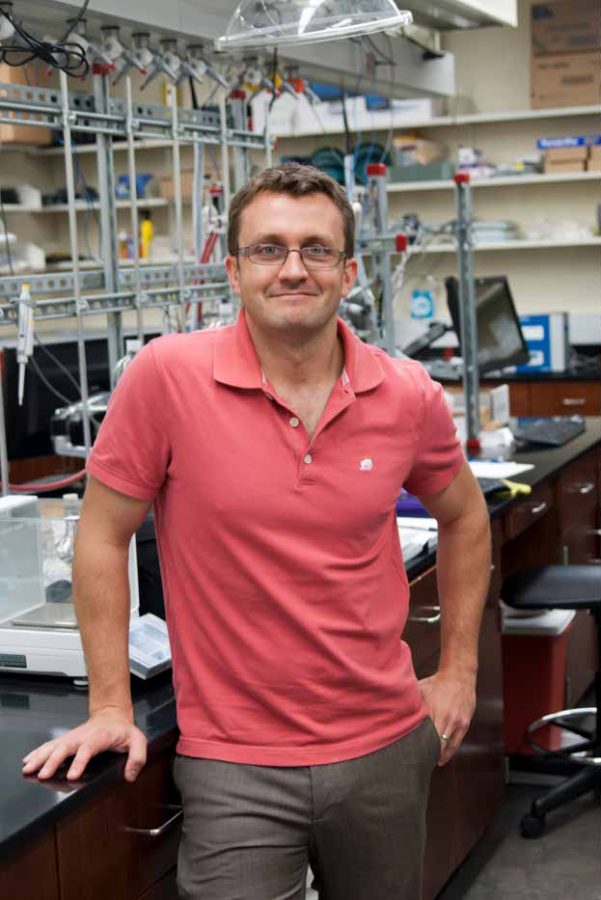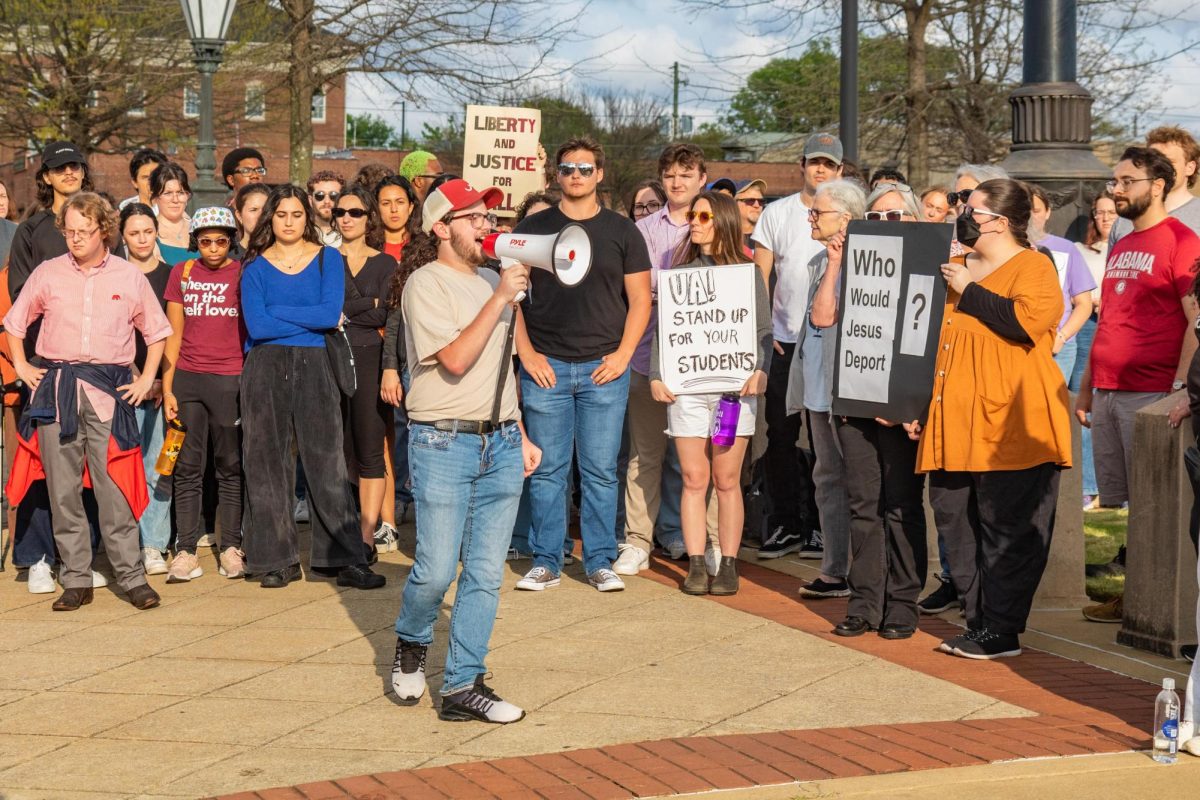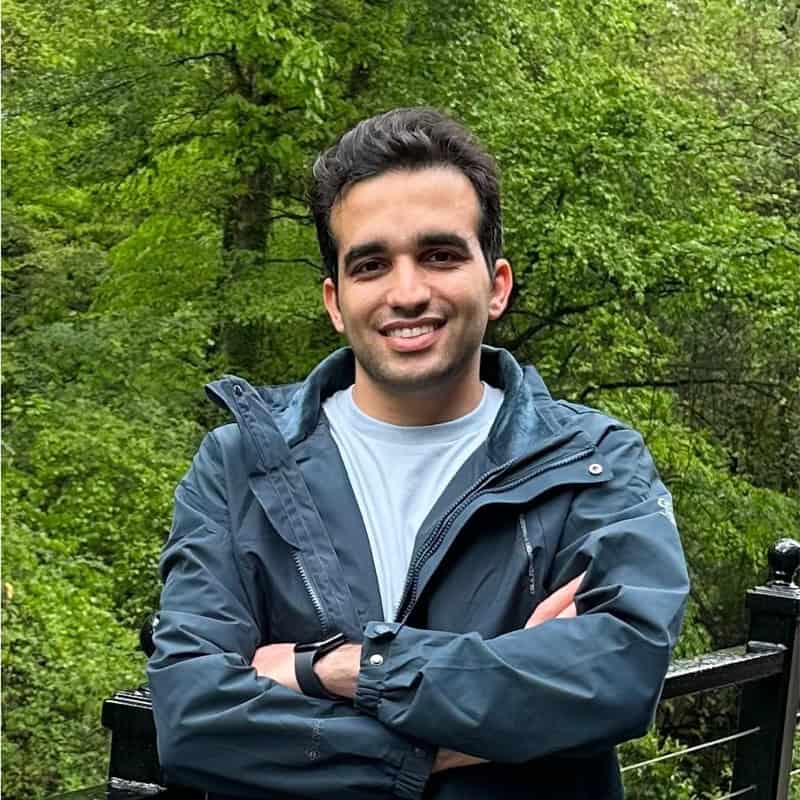Driving by a power plant on a cold day, a white plume of steam is visible, but other invisible gases also leave the power plant in that column of steam – oxygen, nitrogen and importantly, carbon dioxide. Jason Bara, assistant professor of chemical engineering, pioneered and recently patented the use of imidazole as part of a liquid mixture to extract carbon dioxide from power plant emissions.
“We hear a lot about carbon capture and carbon sequestration in the news, so pumping CO2 from power plants underground and storing it and hoping it stays there for millions of years and not letting it get emitted into the environment or the atmosphere,” Bara said. “What we focus on is the actual process by which CO2 is separated from the combustion gases that exit the power plant.”
Bara said he has been working in this particular area of gas processing since his first day of graduate school under the guidance of his advisors.
“I started learning about CO2 capture like 10-11 years ago, before it was such a big issue,” Bara said. “One thing just led to another. We tried different chemistries, different materials. Basically there’s a bunch of different things you want to look for when you’re designing a solvent.
“So you want it to be environmentally friendly, low cost and efficient at capturing the CO2 from the gas stream. So after I don’t know how many iterations, we finally came up with this system, and I think it’s got a lot of promise.”
Bara’s liquid mixture of water, an amine and imidazole, trickles down an absorption column, which is a tall metal cylinder, through some sort of interface, often beads or some other kind of packing, and the gas from the power plant floats up from the bottom.
As the liquid interacts with the gas, it extracts about 90 percent of the CO2. The liquid that has absorbed the CO2 is captured at the bottom of the absorption column and transferred to another column, which is kept above the boiling point of water, at at least 270 degrees Fahrenheit.
In the second column, the liquid travels through the packing, and the CO2 comes off due to the heat. The liquid is then clean and able to be reused in the first column. The extracted CO2 is condensed and then pumped underground.
Bara said he came up with the idea of using imidazole on his own and then passed it off to a graduate student, Matthew Shannon, now a fourth-year doctoral candidate, to experiment. He returned with impressive data.
“He had just started so I’m like, ‘Maybe he just didn’t calculate something right.’ And we started going through, and we did it again and again for a week, and we thought, ‘Wow, this is actually way better than we would have expected. We’re getting a much better performance,’” Bara said. “That was kind of the moment, where I was like, ‘Okay, I knew it was unique and novel, but I didn’t know it was going to work that well.’”
Shannon and Bara were new to each other when they began the project, Shannon said.
“He basically said, ‘I have this new, really cool idea,’ that’s going to kind of segue from his old research from Colorado and basically introduced the imidazole platform and said, ‘Hey we really need to get a good basis on this, get all the physical properties and be the first to publish this.’ And here we are three to four years later with a patent and tons of different papers and ideas coming from this,” Shannon said.
ION Engineering, a Colorado company Bara helped start in 2008, has now licensed Bara’s use of imidazole in carbon capturing.
Jeffrey Horne, a fourth-year doctoral candidate, works with Bara exploring the use of imidazoles to make polymers, and John Whitley, a second-year doctoral candidate also works with Bara to find ways to polymerize materials more efficiently – bulletproof glass and rubber tires are examples of polymers at work.
All three of the doctoral candidates interviewed said working with Bara is a pleasure.
“Not only is he a fantastic professor in class, he genuinely cares about the students taking his class, but his research group is just a whole different level. He is going very far. It’s amazing he’s accomplished what he has at his young age,” Horne said.









